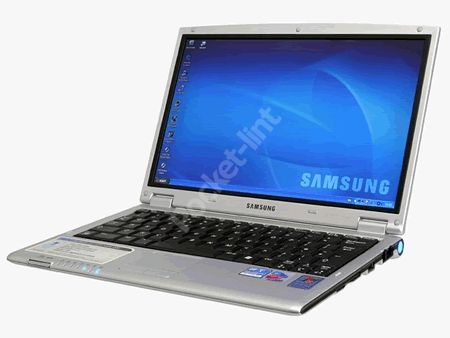All notebooks are portable, where else would we opt to spend money on them if they didn't allow us to use them whenever and wherever we liked? However, not all notebooks are created equal, as only the slimmest and lightest can truly attest to being ultraportable.
Our quick take
Light and slight, the Q30 is at the forefront of the new wave of ultraportable notebooks. While its looks and size can’t be faulted, and it comes with an equally impressive feature set, its battery life leaves a lot to be desired. This is a criticism which would be normal for a desktop replacement that’s not meant to leave your home. If you need to have a notebook with you but can live with a limited battery, this is a stunning piece of kit - however find out the price for another battery and incorporate this into your budget.

Samsung Q30 - 4.0 / 5
| FOR | AGAINST |
|---|---|
|
|
Samsung has a long association with making affordable and portable laptops and it has always maintained at least one ultraportable in its range, the eminently light Q30 being the latest. Weighing in at 1.1kg, it weighs little more than a typical bag of sugar and its looks are just as sweet.
There is no need to buy a specific notebook case for this machine, as the Q30 is the size of a hardback book, so can be slipped into your average carry case with ease. The power button is located on the side of the machine but there is no lock, so should you accidentally strike it, you'll drain the battery without knowing you've even switched the machine on. It would have been far safer to add a controller that would only switch the machine on once the screen had been raised.
The Q30 makes full use of Intel Centrino technology. An Ultra-Low Voltage Pentium M 733 processor provides a 1.1GHz clock-speed and 2MB of Level 2 cache for effective mobile performance. Combined with 512MB DDR SDRAM and a 40GB Toshiba hard drive, the Q30 delivers mid-level specifications primarily geared towards mobility.
Intel may have released its Sonoma chip in recent months, which is designed for manufacturers to implement in slim and light notebooks. However, such vendors are having trouble supplying the chipset in their ultraportable machines. To this end, the Q30 uses the Intel 855 chipset to link the processor to the system, as well as to run the graphics sub-system. Sourcing up to 64MB of shared video memory, this isn't a chip designed for multimedia use. Scoring 116 points under 3DMark 2003 benchmark tests, the Samsung will suffice for office use, but won't stretch to gaming or multimedia applications.
Keeping weight to a minimum is harder than it may first appear. However, the use of a 12.1-inch TFT panel means that Samsung can use a smaller chassis. This does mean that the keyboard is a little on the cramped side but it's usable and after only a short time is comfortable to use.
Designed as a single spindle machine, you won't find an optical drive in the system. Instead, Samsung has opted for an external drive that plugs in through one of the two USB 2.0 the notebook sports.
All this adds up to a notebook that is extremely usable. That said, there is downside to all this: namely, battery life. We managed to get a little over two hours from this system. Sure, you'll get through the average meeting but what about the rest of the day? Ultraportable notebooks should offer more, sadly in this instance they don't.
To recap
With the looks to match its ultralight weight, the only thing lacking with this notebook is a respectable battery life
